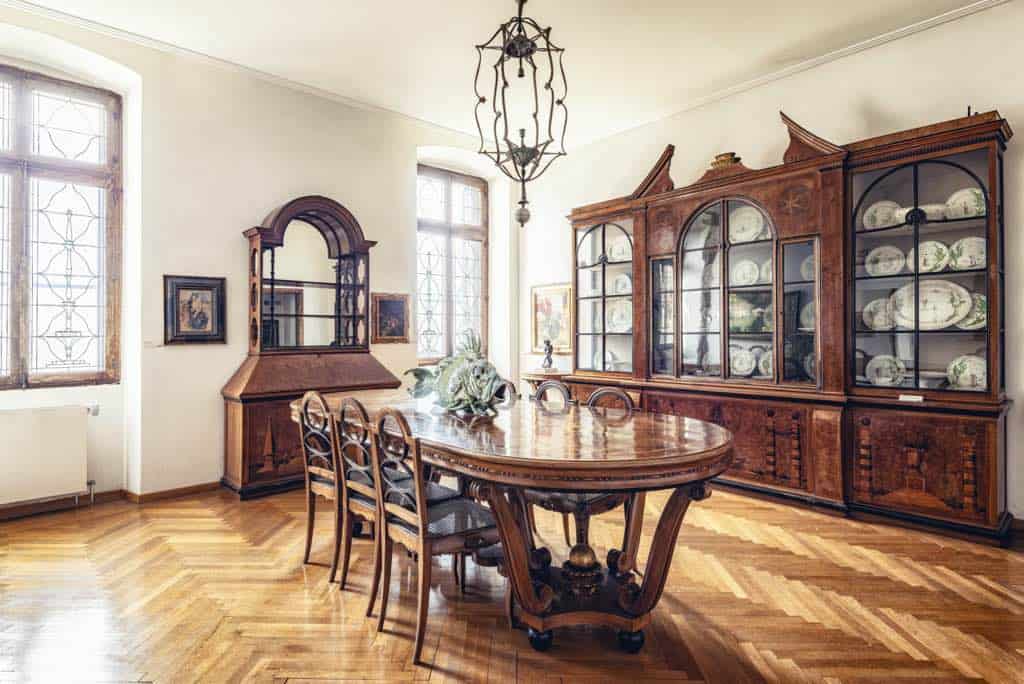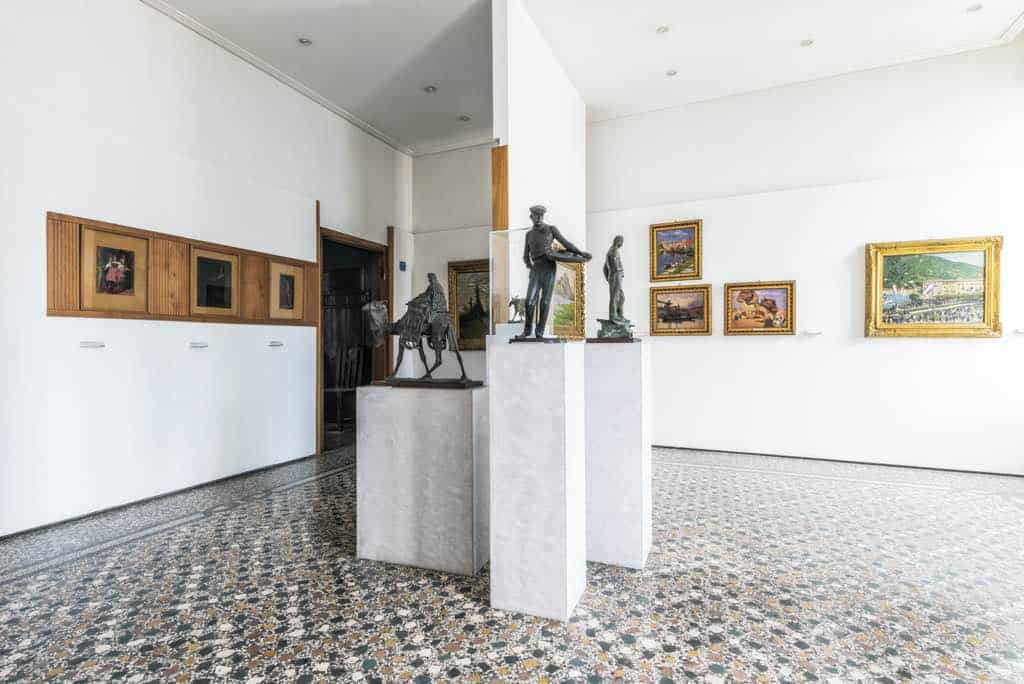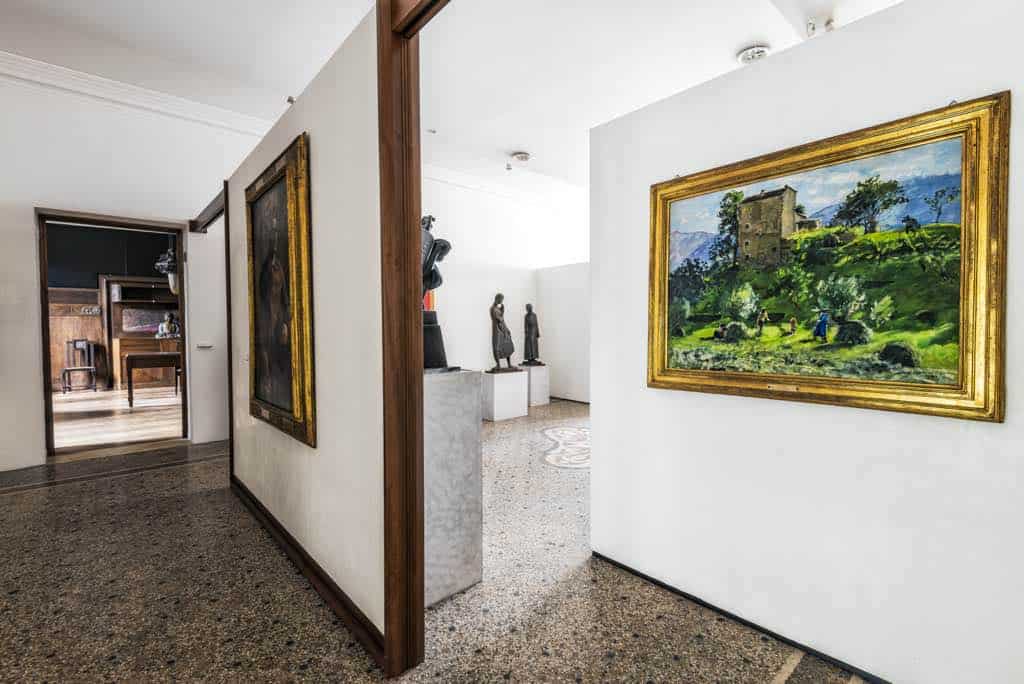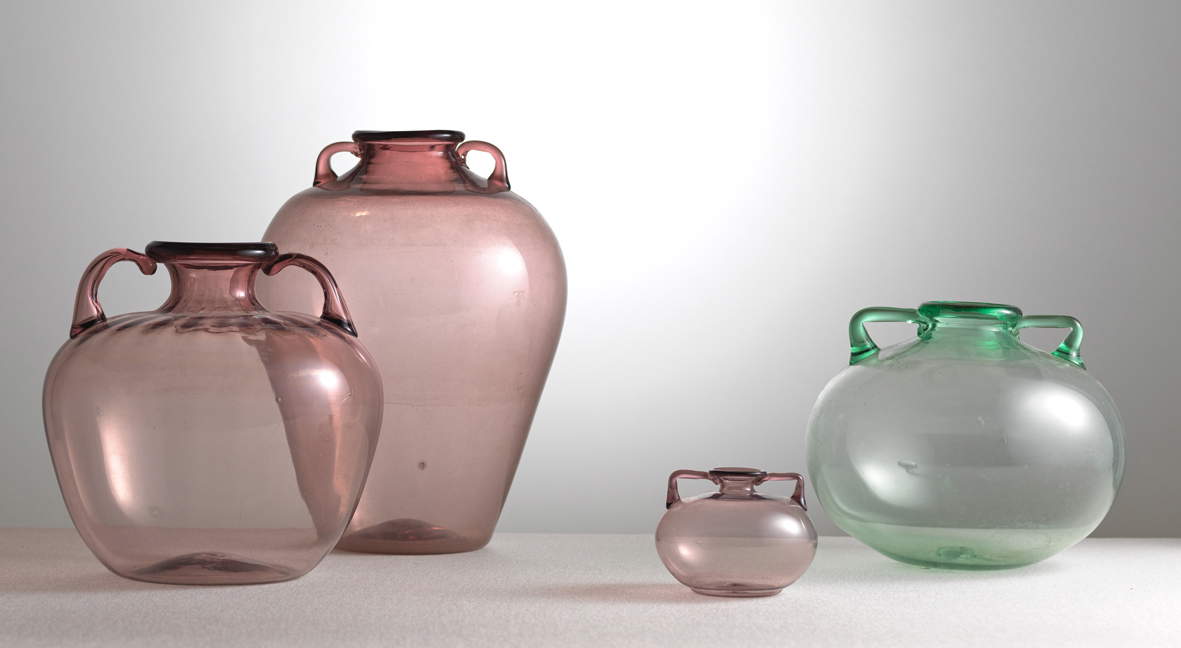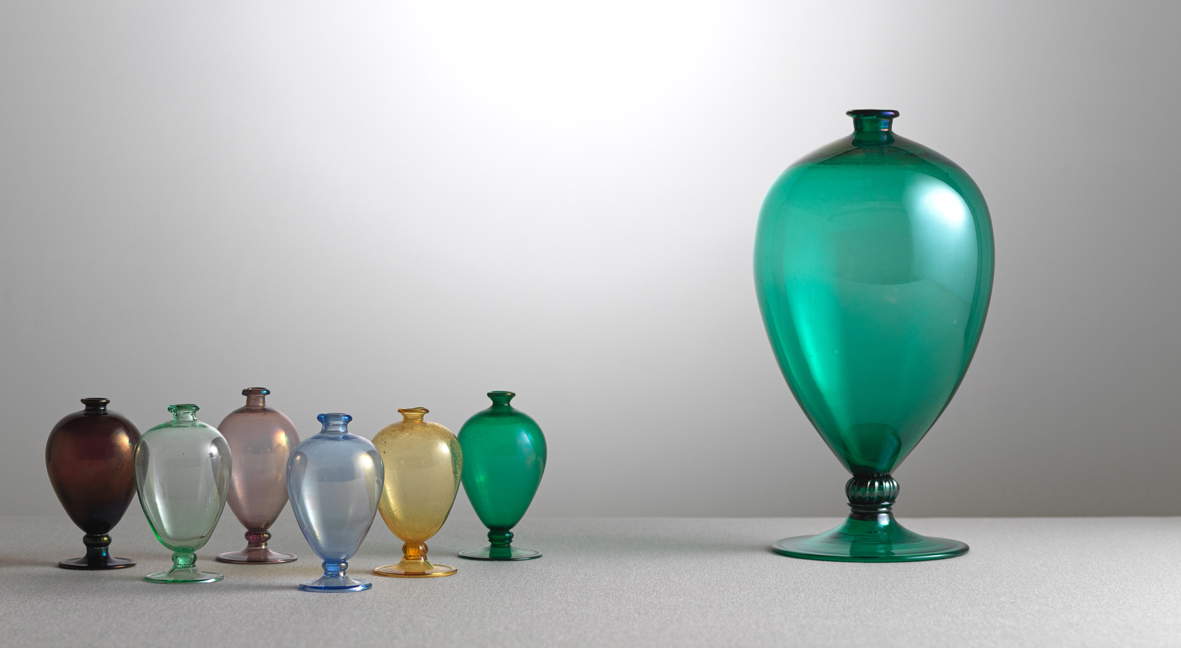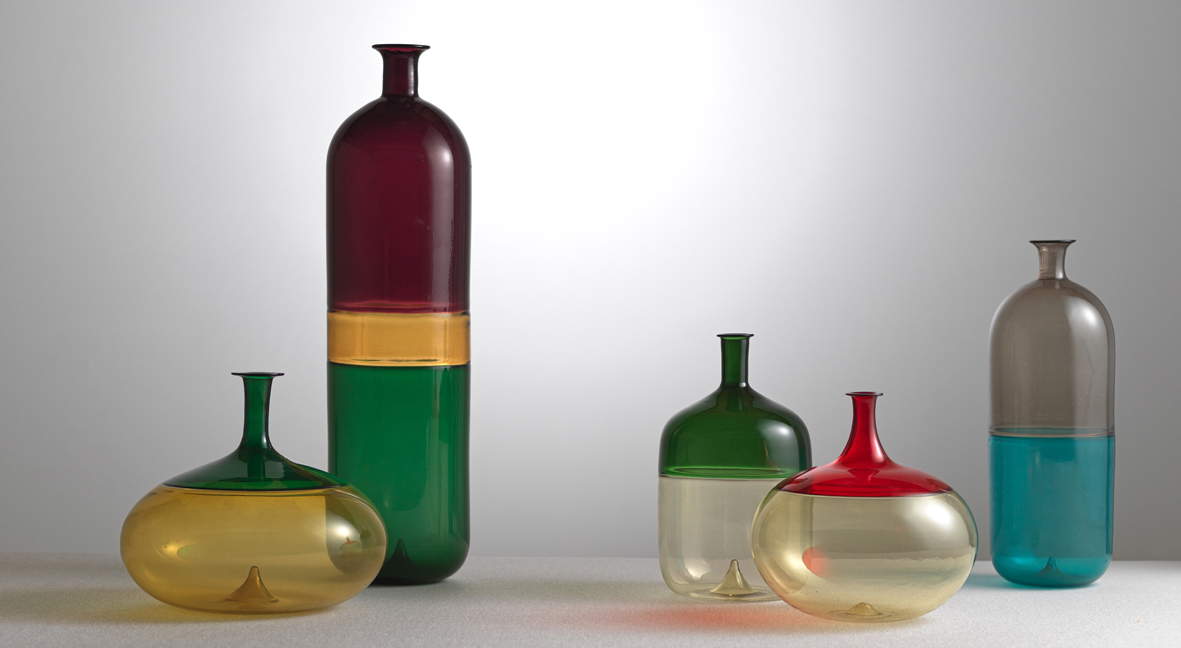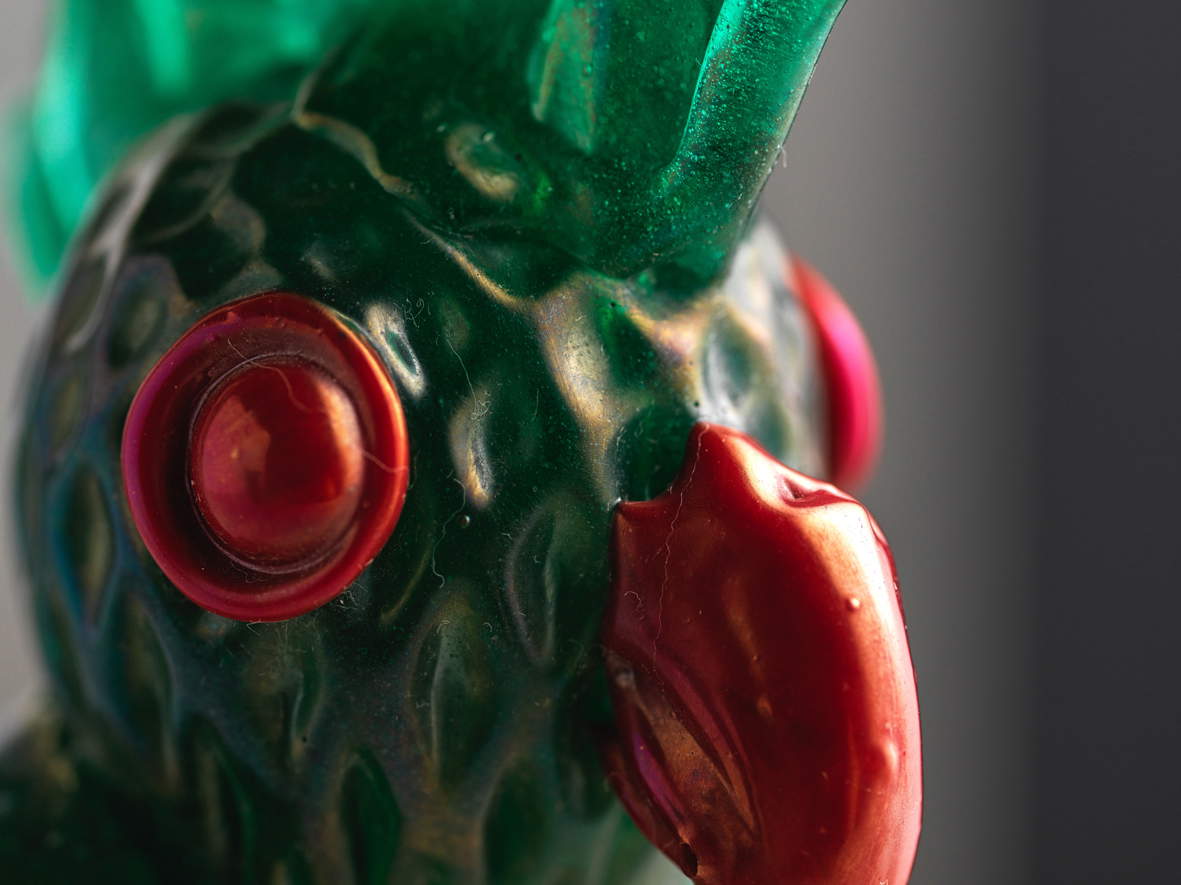by Leonardo Bison , published on 12/08/2021
Categories: Works and artists
/ Disclaimer
In Feltre, the precious Nasci-Franzoia Collection was recently donated to the Carlo Rizzarda Gallery, making it the world's largest public collection of Venetian glass. Here is the history and masterpieces of this collection.
The largest public collection of Venetian glass in the world. This is how the administration of the municipality of Feltre, a town at the foot of the Dolomites, justifies its enthusiasm for the Nasci-Franzoia Collection, born from the passion and 30-year collecting drive of the namesake couple and precisely from Ferruccio Franzoia, architect and student of Carlo Scarpa, donated to the municipality and the Carlo Rizzarda Gallery in 2018 for stable public display.
In July, a lavish catalog desired by the municipality and edited by Franzoia himself and Tiziana Casagrande, the museum’s curator(SilvanaEditoriale, 49 ), was presented to citizens and the press. Nearly 600 pages that accompany the reader, whether he or she is a fine connoisseur of the Murano glassworks or just curious to know more, to discover not only the collection now housed in the Feltre museum, but the history of decorative arts, glass and contemporary collecting.
The collection is located on the second floor of the Carlo Rizzarda Gallery with a layout curated by Franzoia himself, who was already the creator of the museum’s exhibition set-up in 2000, and is open to the public from May 8, 2021. Lesposition is a dive into the glass production of the 20th century. Not only the works of Carlo Scarpa, in his various collaborations with the Cappellin and Venini firms. But glass designed by many different personalities of the Murano twentieth century, such as Napoleone Martinuzzi (Murnao, 1892 - Venice, 1977), Tomaso Buzzi (Sondrio, 1900 - Rapallo, 1981), Vittorio Zecchin (Murano, 1878 - 1947), Tyra Lundgren (Stockholm, 1897 - 1979), Paolo Venini (Milan, 1895 - Venice, 1959), Massimo Vignelli (Milan, 1931 - New York, 2014), Fulvio Bianconi (Padua, 1915 - Milan, 1996), Toni Zuccheri (San Vito al Tagliamento, 1936 - 2008), Tobia Scarpa (Venice, 1935), Alfredo Barbini (Murano, 1912 - 2007), Archimede Seguso (Murano, 1909 - 1995), Flavio Poli (Chioggia, 1900 - Venice, 1984), Tapio Wirkkala (Hanko, 1915 - Helsinki, 1985), Guido Balsamo Stella (Turin, 1882 - Asolo, 1941), Giuseppe Barovier (Murano, 1853 - 1842) and Guido Bin, pseudonym of Mario Deluigi (Treviso, 1901 - Dolo, 1978). There is no shortage of contemporaries, such as Alessandro and Laura Diaz de Santillana, Sergio Asti, Heinz Oestergaard, Luciano Gaspari, Maria Grazia Rosin, Cristiano Bianchin, Michela Cattai and many others.
 |
| The Carlo Rizzarda Gallery |
 |
| The Carlo Rizzarda Gallery |
 |
| The Carlo Rizzarda Gallery |
The exhibition is spread over three rooms. The first is devoted to the production of the firm Vetri Soffiati Muranesi Cappellin-Venini & C., established in 1921 by Giacomo Cappellin and Paolo Venini, under the artistic direction of Vittorio Zecchin, and to the models created by Zecchin that continued to be produced by the firms that came into being after the dissolution of Cappellin-Venini. The second room documents the productions of the two manufactures, Maestri Vetrai Muranesi Cappellin & C. and Vetri Soffiati Muranesi Venini & C. Some of the objects refer to the presence in Murano of Carlo Scarpa (Venice, 1906 - Sendai, 1978), who started with Cappellin in 1926, where he remained until 1931, and then moved to Venini until 1947. But the room houses many other examples of Venini’s production from the years between 1925 and 1960 and a miscellany of products from other firms active in the lagoon. The third and last room, the largest, is devoted to table glass: consumer objects, intended for ephemeral use and therefore, as the catalog says, the section offers unimportant evidence of taste and custom. Most of the pieces in the collection refer to models created by Zecchin in the 1920s, but examples of Venetian glassware from an earlier age are also documented, such as a set of Louis XVI faceted crystal glass with gold decoration and a sampling of historicist glasses with polychrome enamel or wheel-engraved decoration. There are also table crystals of non-Murano production of Belle �?poque taste and some examples of Bohemian glassware marketed in Venice by the Venice and Murano Company. The entire display is accompanied by a number of paintings and mosaics, all belonging to the Carla Nasci-Ferruccio Franzoia collection.
Walking through the rooms, that mixture of innovation and tradition, combined with a profound technical expertise, that characterizes Murano’s productions, is immediately perceptible, coming to amaze even the visitor less accustomed to glassmaking. The only drawback is the absence of explanatory panels such as to allow the visitor unfamiliar with the history of the productions the chronological and temporal, as well as personal, developments that form the context and basis of the productions on display: but this is a typical drawback of decorative and contemporary arts exhibitions.
A tool for understanding the collection in all its aspects, and much more, is the aforementioned catalog. Here we find nearly 300 cards describing the glass exhibits, written in language that is easy to read even for those who do not chew technical terms, and we find the biographies of the various glassmakers and makers on display. But that’s not all: the photographic reproductions, of excellent quality, make it possible to immerse oneself in the colors and shapes before and after the visit. The essays collected in the first part of the catalog allow the reader to fully understand the genesis of the museum, the collection, and the development and trends in Venetian and, to some extent, Italian decorative arts during the last century. In the first essay, Tiziana Casagrande places the Nasci-Franzoia collection in the context of the Carlo Rizzarda Gallery, a collection that represents a coherent enrichment of the decorative arts museum established by bequest in his will by the celebrated master of wrought iron whose name it bears. The new section in fact continues, expanding it in perfect harmony, a theme already present in the doriginal nucleus of the permanent exhibition: that of glass and color, which in the production of Rizzarda (Feltre, 1883 - Milan, 1931) is well present and in dialogue with iron, as the curator explains in the following pages.
 |
| Napoleone Martinuzzi for Venini, Placeholder with pheasants (1930; lattimo glass on a cylindrical base of iridescent crystal glass with gold leaf applications; Feltre, Galleria Carlo Rizzarda, Nasci-Franzoia Collection) and wild boar (1928-1929; pulegosto glass; Feltre, Galleria Carlo Rizzarda, Nasci-Franzoia Collection) |
 |
| Laura Diaz de Santillana for Eos, Vasi (1980s; red, black, and transparent reeded glass; Feltre, Galleria Carlo Rizzarda, Nasci-Franzoia Collection) |
 |
| Toni Zuccheri for Venini, Gabbiano (1964; crystal glass with red and gray polychrome canes, bronze legs; Feltre, Galleria Carlo Rizzarda, Nasci-Franzoia Collection) |
 |
| Vittorio Zecchin for VSM Cappellin-Venini & C., Vases (1921-1925; amethyst and light green transparent blown glass; Feltre, Galleria Carlo Rizzarda, Nasci-Franzoia Collection) |
 |
| Vittorio Zecchin for VSM Cappellin-Venini & C., Veronese Vases (1921-1922; transparent blown glass of different colors; Feltre, Galleria Carlo Rizzarda, Nasci-Franzoia Collection) |
 |
| Tapio Wirkkala for Venini, Bottiglie della serie Bolle (1966; incalmo welded blown transparent glass; Feltre, Galleria Carlo Rizzarda, Nasci-Franzoia Collection) |
 |
| Napoleone Martinuzzi for Zecchin-Martinuzzi, Vase (1933; red veiled glass with gold leaf applications; Feltre, Galleria Carlo Rizzarda, Nasci-Franzoia Collection) |
 |
| Vittorio Zecchin, Biconical Vase, detail (clear glass with polychrome enamel and gold leaf decoration of subject; Feltre, Galleria Carlo Rizzarda, Nasci-Franzoia Collection) marine |
 |
| MVM Cappellin & C., Pappagallino, detail (1925-1931; emerald green pulegoso glass and red paste details; Feltre, Carlo Rizzarda Gallery, Nasci-Franzoia Collection) |
In the following essays, Rosa Barovier Mantovani recounts the relationship with the Murano tradition of the 15th and 16th centuries that is encountered in the glass of the Nasci-Franzoia collection, through an account of the apogees, crises, and transformations of the Murano glassworks over the centuries up to the rebirth of the 1920s and 1930s. Mariateresa Chirico follows, going on to investigate the appearance on the scene of new Venetian productions in Italian exhibitions (biennials, triennials) of the twentieth century, going on to investigate motives and modes of a late explosion, compared to the rest of Europe, but so creative. This is followed by two essays devoted in particular to the figure of Vittorio Zecchin (Marino Barovier) and Carlo Scarpa (J.K. Mauro Pierconti). The section closes with a six-act dialogue with the collector, Ferruccio Franzoia, which allows for an in-depth investigation of his relationship with larte, museums, decorative arts and, ultimately, the ways and means by which he and his wife Carla Nasci created their collection. A collection that today is for public enjoyment, for what Franzoia called at the press conference an act of love. But not an act of love to Feltre, just an act of love: I would add, having listened to the rest of the intervention, an act of love to the public and to museums, spaces where anyone can enjoy that collection.
And precisely on the place that collects the Nasci-Franzoia collection, the Carlo Rizzarda Gallery, it is good to say a few words in conclusion. It is a city jewel born from another act of love, that of Carlo Rizzarda, a son of the city of Feltre who was born in economic straits and became famous on a European level thanks to his extraordinary skill in striking iron. Rizzarda collected for the rest of his life, and then donated his entire collection (also including works by Wildt, Signorini, Fattori... ) and the production remaining in his possession to the city of Feltre. Thus the Rizzarda Gallery was born, with a mandate to expand and continue to buy and collect works of contemporary art: as often happens, expansions were limited, until the great Franzoia donation. But the gallery remains a little gem for those who want to understand and admire the decorative arts of the Italian twentieth century. The municipality promises soon the publication of a second major catalog, on the wrought irons of the Rizzarda collection. In the meantime, a visit is widely recommended.
Warning: the translation into English of the original Italian article was created using automatic tools.
We undertake to review all articles, but we do not guarantee the total absence of inaccuracies in the translation due to the program. You can
find the original by clicking on the ITA button. If you find any mistake,please contact us.
